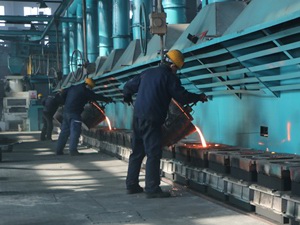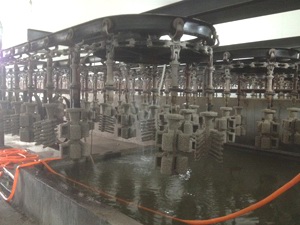| |
Some clients want to know what gravity casting is, and what difference with die casting, and investment casting.
As the explanation of Wikipedia, the Gravity casting is among the oldest known processes for fabricating metals and metal alloys. So, the liquid metal flows into the molds only by the force of gravity, not by other extra pressure, vacuums or centrifugal force.
Gravity casting process is very common and good casting process in China. We use it to produce iron castings, steel castings, aluminum and brass castings. Simple and widely used, sometimes, we call it as sand casting process. It has some shortcomings compared with other casting processes, including surface quality, casting defects, complexity of castings, density of metals etc. The advantages are low price, high production rate, suitable for various size and weight.

Gravity Sand Casting Process for Cast Iron
Die casting process uses extra pressure to push the liquid metal into the molds, so the density of the metals is much better, and less shrinkage defects. The surface quality will be much better too, and could produce very complex castings. The shortcomings are high production cost, can only produce aluminum and zinc casting, so can not be used for making iron and steel castings. Moreover, it is not suitable or making large castings.

Die Casting Process for Cast Aluminum
Lost wax investment casting is a type of gravity casting too, because it takes advantage of gravity force. Normally, we only use lost wax investment casting to produce steel castings. Because of the pollution control in the recent years in China, the production cost for this casting process is becoming higher and higher, so some foundries have tried to use shell molding process to replace it.

Lost Wax Investment Casting Process for Cast Steel
The vacuum casting process and centrifugal casting process are also good casting processes, however, they are not widely used, and only suitable for making special castings, such as small castings, or castings with special shapes. |
|
